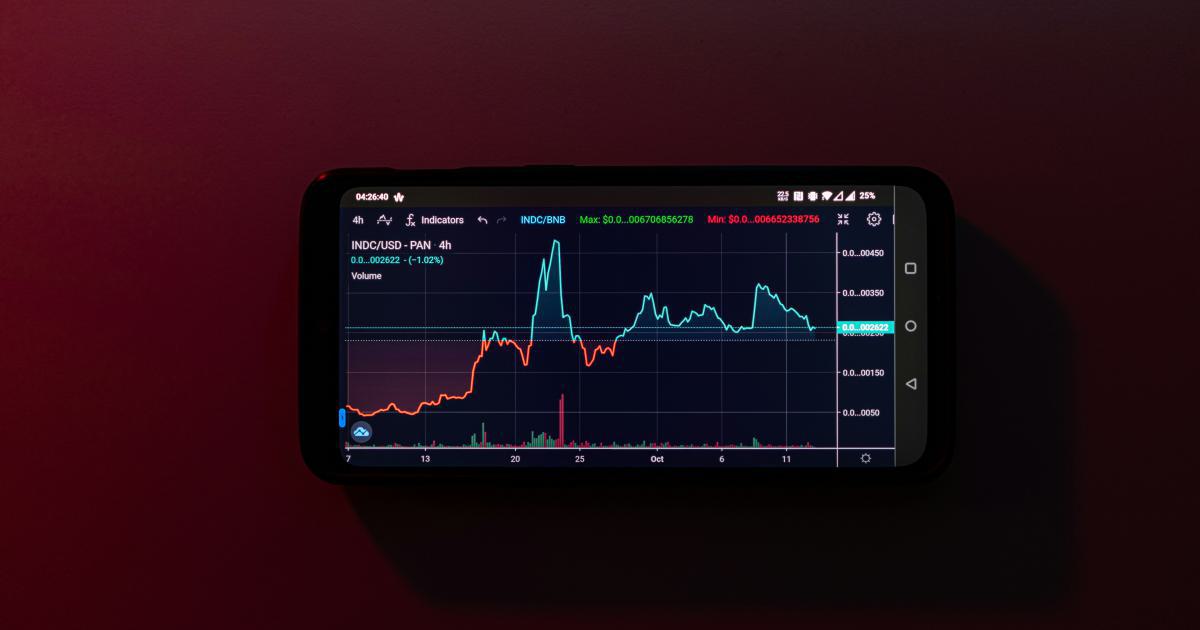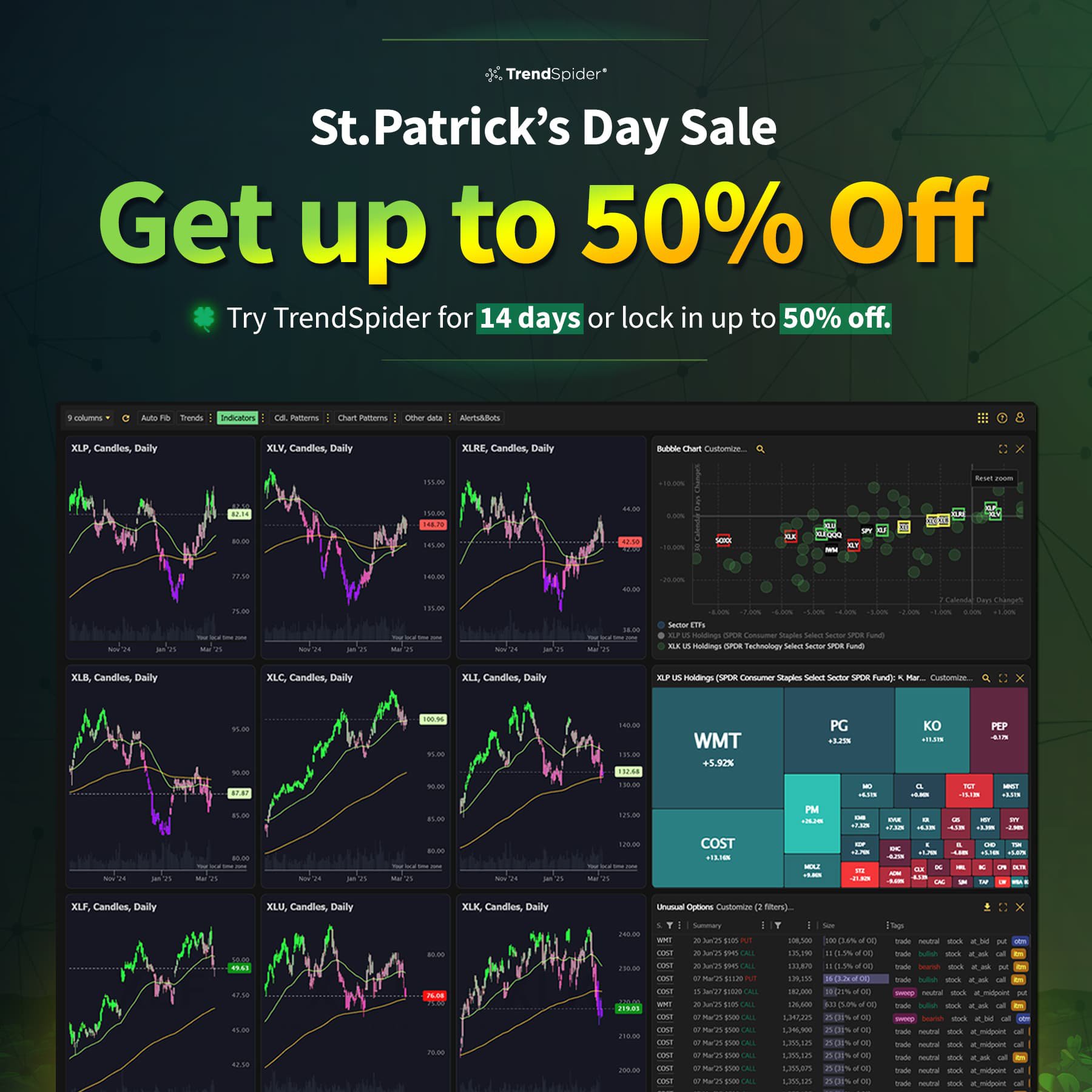How to Choose the Best Copy Trading Platform

Choosing the best copy trading platform can be a challenging yet rewarding endeavor in today’s digital investment landscape. Copy trading, which allows less experienced traders to mimic the trading strategies of professionals, has increasingly gained popularity around the world. For anyone curious about leveraging the power of social trading, understanding how to choose the best copy trading platform is essential. In this comprehensive guide, we will outline everything you need to know – from key features to look for, real-world examples of success, and actionable advice that will empower you to make informed decisions. Whether you are a novice investor or a seasoned trader, this article will walk you through the intricacies of selecting a platform that meets your unique financial goals while ensuring safety and usability.
Understanding Copy Trading
Copy trading is a method that allows traders to automatically purchase the same trades as expert investors, effectively “copying” their strategies in real-time. This innovative approach bridges the gap between expertise and opportunity, making it easier for beginners to learn by observing the actions of experienced traders.
What is Copy Trading?
At its core, copy trading connects your investment account to that of an expert trader. When a signal to buy or sell is generated by the expert, the same trade is executed on your account. Investors utilizing this strategy benefit from the investor’s expertise without the need for constant market monitoring or intricate analysis.
Key aspects include:
- Automated execution: Trades are mirrored automatically.
- Diversification: Multiple experts may be followed to spread risk.
- Real-time updates: Investors can see live trade progress, allowing adjustments as necessary.
This method has transformed the trading industry by democratizing access to sophisticated trading strategies. However, while the concept appears straightforward, selecting the right platform is critical to ensuring that your investments are both secure and profitable.
Evolution of Copy Trading
The evolution of copy trading began with traditional brokers offering manual tracking and advice, but today, sophisticated algorithms and comprehensive interfaces have simplified the process for modern investors. Early copy trading platforms were restricted and available only to elite traders. Today’s platforms offer a wide range of social trading options suitable for investors worldwide. This transformation has spurred an increase in market participation, as more individuals strive to harness the expertise of experienced traders.
Types of Copy Trading Platforms
Broadly, there are two types of copy trading platforms available:
- Automated Copy Trading Platforms: These platforms use algorithms to automatically trigger trades without user intervention.
- Social Copy Trading Platforms: These platforms incorporate social media elements, enabling investors to interact, comment, and learn from trading communities.
Each type brings its own advantages and potential drawbacks. Automated platforms might be faster and reduce human error, while social platforms often provide more transparency and community support.
Key Features to Consider in a Copy Trading Platform
Determining the best copy trading platform requires an evaluation of multiple factors. In this section, we’ll explore the central features you should consider when making your choice. Among these, factors such as user interface design, fee structure, security measures, and available market research play critical roles in the overall experience.
1. Regulation and Security
Without proper regulation, even the best copy trading platform can quickly become a risky investment outlet. Ensure that the platform is governed by reputable financial authorities. Look for:
- Compliance with Global Standards: The platform should adhere to relevant financial regulations.
- Security Protocols: This includes two-factor authentication, encryption of data, and secure wallets for holding funds.
- Transparent Policies: A platform that openly details its security measures, trading policies, and risk management strategies builds trust with users.
Real-world case studies have shown that platforms with robust regulatory oversight and advanced security features tend to handle market volatility more effectively, especially during financial crises.
2. User Interface and Experience
A clean, intuitive interface is crucial for both new traders and seasoned professionals. A well-designed platform should provide clear navigation, accessible charts, and easy-to-understand analytics. Consider the following:
- Dashboard Layout: The main dashboard should clearly display account balances, recent trades, and market trends.
- Customization Options: Some platforms offer the ability to customize the dashboard according to your preferences.
- Mobile Compatibility: With a growing number of traders using smartphones, having a seamless mobile experience is vital.
User feedback indicates that the best copy trading platform is often determined by its ease of use and the quality of its interactive elements. A solid user interface not only enhances the user experience but also reduces the risk of misunderstanding key functions during critical trading moments.

3. Fee Structure and Transparency
When choosing a copy trading platform, understanding the fee structure is paramount. Many platforms charge fees in various forms, including:
- Performance Fees: A percentage of profits generated.
- Subscription Fees: Monthly or annual fees for accessing premium features.
- Commission Fees: Charges per trade or transaction.
The best copy trading platform should have a transparent fee structure with no hidden charges. Make sure to review all costs before committing your capital, and consider whether the potential gains outweigh the fees incurred.
4. Range of Available Markets and Instruments
Diversification is key to managing risk. Some platforms offer access to a wide range of financial instruments, including stocks, forex, commodities, and cryptocurrencies. Evaluate the diversity of markets available:
- Market Depth: Does the platform provide sufficient data for both well-established and emerging markets?
- Range of Assets: A platform with a wide range of investment options allows for greater diversification strategies.
- Data and Analytics: Advanced analytics can help you make better decisions by providing insights into market trends and performance metrics.
Choosing a platform that aligns with your investment goals, especially one which promotes the best copy trading platform practices for diversification, will inherently support your long-term strategy.
5. Community and Educational Resources
The presence of an engaged community and accessible educational resources can tremendously boost your trading knowledge. The best copy trading platform should offer:
- Live Chat Forums or Social Feeds: These allow you to communicate with other traders, ask questions, and share insights.
- Educational Webinars and Tutorials: Regular sessions with expert traders and detailed tutorials can help enhance your trading skills.
- Detailed Profiles of Copy Traders: Access to thorough profiles, including historical performance data, is essential for making informed decisions.
A platform that encourages community interaction fosters an environment where questions are welcomed, making it easier for you to learn from seasoned traders.
Detailed Analysis: Evaluating Different Platforms
Once you are aware of the key features, the next step involves assessing actual platforms. This section will provide a detailed analysis of how to evaluate and compare multiple platforms in order to select the best copy trading platform for your needs.
Comparing Platforms: Side-by-Side Analysis
Perform a side-by-side comparison to note essential similarities and differences:
- Regulatory Status: List the regulatory authorities overseeing each platform.
- Fee Comparisons: Break down the fee structures and interpret the hidden costs if any.
- User Experience: Compare user reviews, interface design, and mobile experience.
- Available Markets: Evaluate the range of financial instruments provided by each.
- Community & Support: Review the quality of customer support along with available educational materials and community forums.
Develop a comparison table or checklist that includes these factors. This will help you to objectively measure and contrast the platforms based on clear criteria.
Real-World Examples and Case Studies
Consider the success stories and failures of traders who have used these platforms. Studies have shown that platforms with transparent practices and strong community support have outperformed those with ambiguous fee structures or poor user experiences. One notable example comes from a trader in Europe who successfully diversified their portfolio by following multiple expert traders. Despite a steep initial learning curve, the advantages of a robust copy trading platform helped increase overall returns significantly over a short duration.
Moreover, analyzing different case studies can reveal how certain platforms handle unexpected market changes. For example, during periods of high market volatility, some platforms have implemented measures such as automatic stop-loss mechanisms to prevent drastic losses. These experiences underscore the importance of selecting a platform that not only meets your immediate needs but also adapts well in increasingly dynamic market conditions.
Evaluating Performance Metrics
The performance metrics provided by each platform offer insightful data that can influence your decision. Important performance metrics to examine include:
- Historical Returns: Look at the long-term performance of expert traders and the platform itself.
- Risk Metrics: Determine the potential downside risks associated with copying a specific trader.
- User Ratings and Reviews: Aggregate feedback from current and past users to form an overall rating for the platform.
- Statistical Analysis Tools: Some platforms offer in-depth statistical analysis tools that can help you monitor the success rate and risk-adjusted returns of your portfolio.
Using these performance metrics, you can develop a deeper understanding of which platform practices lead to long-term success and which may expose you to unnecessary risks.
Feature-Rich Platforms Versus Simple Platforms
Not all investors will have the same needs:
- Beginner-Friendly Platforms: These platforms emphasize simplicity and ease-of-use, offering tutorials, demo accounts, and step-by-step guidance.
- Advanced Platforms: Designed for experienced traders, these often include more advanced charting tools, algorithmic trading capabilities, and customizable dashboards.
Choosing between a feature-rich platform and a simpler one ultimately depends on your level of expertise and trading goals. For those just starting out, a platform that provides educational support and an intuitive interface might be preferable. On the other hand, advanced traders may benefit from features that allow for more extensive customization and data analysis.

Practical Steps for Selecting Your Platform
Now that you understand the key features and evaluation metrics, let’s explore a step-by-step guide that can help you make the best decision.
Step 1: Define Your Trading Objectives
Before registering with any platform, it is crucial to clearly define your trading objectives:
- Are you looking to invest long-term or engage in short-term trading?
- Do you prefer a diversified investment portfolio or a concentrated approach?
- How involved do you wish to be in managing your portfolio decisions?
Setting clear objectives at the outset will help guide your selection process. For instance, if you seek to minimize risk while learning from experts, opt for a platform that offers robust educational resources and moderated risk settings.
Step 2: Conduct Thorough Research
Research is the cornerstone of any informed decision:
- Read Reviews: Look for unbiased reviews from financial experts and experienced users.
- Join Forums: Participate in online trading communities where experienced members discuss their platforms and share honest opinions.
- Request Demos: Most reputable platforms offer free demo accounts. Utilize these to get firsthand experience and see if the platform aligns with your needs.
During this phase of research, make note of how various platforms incorporate the keyword best copy trading platform in their marketing and user support strategies. Analyze whether the touted features truly enhance your trading performance.
Step 3: Test Multiple Platforms
Before committing significant funds, trial runs are invaluable:
- Sign Up for Demo Accounts: Many platforms allow access to simulated trading environments. Use them to test each platform’s interface and features.
- Perform Side-by-Side Comparisons: Create a checklist based on the key features discussed previously. Compare how well each platform performs according to your specific needs.
- Document Your Experience: Keeping a journal of your trading experience on each platform can reveal subtle strengths and weaknesses that might not be obvious at first glance.
A tangible example of this approach would be signing up for demo accounts on three leading platforms and monitoring their performance over a month. Note aspects such as ease of navigation, reliability during volatile market conditions, and the clarity of provided analytics.
Step 4: Evaluate Costs and Benefits
Evaluate the potential return on investment by comparing the cost structure versus the benefits provided:
- Review the fee structures carefully.
- Consider the potential for earning based on historical performance data.
- Weigh the benefits of additional features such as educational support against any premium fees included with the platform.
This balanced approach enables you to decide if the advanced functionalities justify any higher costs. Always ensure that the benefits, in terms of both potential earnings and risk mitigation, align with your overall investment strategy.
Step 5: Consult Expert Opinions
If you are uncertain about your observations:
- Seek Expert Advice: Consult financial advisors or join expert-led webinars.
- Attend Workshops: Participating in live sessions or workshops can provide additional insights into platform performance and suitability.
- Follow Reputable Blogs: Many financial experts share case studies and reviews of copy trading platforms, providing a broader perspective on the efficiency and safety of each option.
A common practice among experienced investors is to combine personal trial with expert recommendations, ensuring a more well-rounded decision-making process.

Advanced Considerations for Experienced Traders
For experienced investors, selecting the best copy trading platform often involves additional layers of complexity. Here we explore some advanced considerations that might affect your decision.
Algorithmic Trading Capabilities
Some platforms offer the ability to integrate algorithmic trading:
- Customizable Algorithms: Advanced platforms allow you to customize or even create your own algorithms to automate certain aspects of your trading strategy.
- Backtesting Tools: Investigate whether the platform provides robust backtesting tools. This feature allows you to simulate algorithm performance against historical market data and adjust parameters accordingly.
- Integration with Third-Party Tools: Consider whether the platform seamlessly integrates with widely used third-party trading tools or APIs, thereby extending your trading capabilities.
Such advanced features are particularly beneficial if your strategy relies heavily on precise timing or if you want to implement custom trade execution strategies.
Social Trading Dynamics
While copy trading is inherently social, several platforms elevate the experience by integrating deeper community features:
- Ranking and Leaderboards: Platforms that rank professional traders offer transparency in performance and risk management practices.
- Interactive Features: Tools such as live chat, comment sections, and Q&A sessions with top traders enhance the learning experience.
- Community Driven Insights: Collective wisdom in a vibrant community can offer insights that might not be apparent from trading statistics alone.
Advanced investors often consider these social dynamics as a continuous source for evolving their strategies, making it easier to keep up with market trends and community-driven changes.
Integrating Risk Management Tools
As markets become more volatile, robust risk management is essential:
- Automatic Stop-loss Features: Platforms that automatically set predefined stop-loss orders can protect your portfolio from significant losses during market downturns.
- Diversification Tools: Integration of diversification and portfolio balancing tools provide advanced traders the ability to fine-tune their exposure to various asset classes.
- Risk Profiling: Some platforms offer in-depth risk profiling that helps you understand your risk tolerance and align it with the strategies available for copying.
Advanced risk management tools ensure that even in turbulent markets, your investments remain as secure as possible while still providing opportunity for profit.
Customization and Interface Flexibility
For professional traders, the ability to customize every aspect of the trading interface can be invaluable:
- Modular Dashboards: Create dashboards that display only the most critical data points.
- Widget Integration: Add or remove widgets based on your trading preferences, ensuring a streamlined experience.
- Charting and Technical Analysis: Platforms offering a variety of charting tools enhance your capability to conduct technical analyses while adapting to changing market dynamics.
Customizable platforms can greatly enhance efficiency, reducing time spent navigating through menus and allowing you to focus on essential decision-making processes.
Future Trends in Copy Trading
The copy trading landscape is continuously evolving, with new technological advancements influencing both platform design and user interaction. Understanding these trends can provide an edge in making long-term investments.
Impact of Artificial Intelligence and Machine Learning
Artificial intelligence (AI) is starting to play a significant role in shaping investment platforms:
- Enhanced Predictive Analytics: Platforms increasingly use AI to predict market trends and optimize trading recommendations.
- Personalized Trading Strategies: Machine learning algorithms are being employed to create customized strategies tailored to an investor’s risk tolerance and historical performance data.
- Automated Risk Assessment: Real-time AI-driven risk assessments are helping traders adjust their positions more dynamically, leading to more responsive portfolio management.
These AI-driven enhancements are gradually transforming the basic functionalities of copy trading, pushing platforms to incorporate more comprehensive, data-driven features.
Mobile-First Trading Experiences
With the continual rise of mobile technology, platforms are increasingly focusing on a mobile-first experience:
- User-Friendly Mobile Apps: Investment in robust mobile apps ensures that traders can respond quickly to market changes, regardless of their location.
- Push Notifications and Alerts: Real-time alerts and push notifications help investors stay updated on critical market events.
- Responsive Design: A responsive design guarantees that all features available on the desktop version are seamlessly accessible via smartphones and tablets.
Mobile-first approaches are particularly attractive to younger traders, and many platforms are now prioritizing mobile features to attract this demographic.
Regulatory Developments
Regulatory environments are evolving in tandem with technology:
- Enhanced Global Regulatory Standards: Platforms must continually adjust to meet emerging global regulatory standards, ensuring that copy trading remains a secure and credible option.
- Impact on Platform Policies: As governments tighten regulations on financial trading, platforms are prompted to update their policies concerning fees, advertisement, and risk disclosures.
- Increased Accountability: More stringent regulations ensure higher accountability in copying strategies and risk management practices.
Monitoring these regulatory trends is essential, as they can fundamentally alter how platforms operate and the safety measures that they offer to users.
The Future of Social Trading
The social aspect of copy trading is enjoying continuous enhancements:
- Gamification Elements: Some platforms are starting to incorporate gamification elements to make the user experience more engaging.
- Enhanced Interactivity: Improved chat tools, virtual meetups, and interactive webinars are becoming more common, ensuring that the social element of copy trading continues to evolve.
- Integrated Learning Platforms: Education and real-time market analysis may soon become integral components of the copy trading ecosystem, offering users an even richer resource for refining their strategies.
Investors should pay close attention to these futuristic developments as they can not only enhance your current trading experience but also indicate whether a platform is poised for long-term success.
Summarizing the Decision-Making Process
To choose the best copy trading platform, you must gather detailed information, conduct rigorous comparisons, and continually assess whether the platform meets your evolving trading needs. Let’s quickly recap the entire process:
Define your trading objectives clearly.
Research and list your potential candidate platforms.
Compare and contrast key features like regulation, user interface, fee structures, market coverage, and educational resources.
Test multiple platforms using demo accounts to gauge real-world performance.
Evaluate the risk and performance metrics thoroughly.
Follow expert opinions and community discussions to validate your choices.
Update your understanding by staying aware of future trends and technological advancements.
By following these actionable steps, you can confidently choose a platform that not only promises profitability but also safeguards your investments with robust security and regulatory compliance.
Final Thoughts and Recommendations
In conclusion, selecting the best copy trading platform involves much more than simply registering on a well-known site. It requires a deep dive into security measures, an evaluation of user experience, and an understanding of both current and emerging market trends. Whether you are a beginner looking to dip your toes into the world of trading or an experienced investor seeking to refine your strategy, a carefully chosen copy trading platform can be a game changer.
Some key takeaways include:
- Prioritize platforms that offer transparency in fee structures and robust security protocols.
- Always test the platform with small investments before expanding your portfolio.
- Leverage community feedback and expert opinions to mitigate potential risks.
- Stay updated on emerging trends like AI integration and enhanced mobile trading capabilities for long-term success.
The rapid evolution of copy trading technology implies that the best copy trading platform today may adapt quickly to incorporate new features and regulatory changes tomorrow. Therefore, continuous learning and vigilance are essential in managing your investment strategy effectively. With careful consideration, due diligence, and an ongoing commitment to monitoring market trends, your copy trading experience can evolve into a consistently profitable and educational journey.
As you embark on your trading journey, remember that the strength of the platform you choose directly influences your success. With robust research and a clear understanding of your own financial goals, you are now better equipped to select the best copy trading platform that fits your needs and helps you navigate the complex world of investments with confidence.
This comprehensive guide is designed to be a resource you return to repeatedly, as the trading landscape evolves. By staying informed and taking advantage of technological advancements, you can ensure that your choice of a copy trading platform remains beneficial over time. Happy trading, and may your investment journey be both profitable and enlightening!
Unlock the Power of Crypto Trading with Binance
Tired of missing out on lucrative trading opportunities? Elevate your game with Binance, the leading crypto exchange trusted by millions worldwide.
With lightning-fast execution, institutional-grade security, and a user-friendly interface, Binance empowers you to seize market moves with confidence. Plus, enjoy access to 100+ cryptocurrencies and cutting-edge tools. Join now and experience the future of trading.
Unmatched Trading Power with Binance
Are you ready to take your trading game to new heights? Binance offers a cutting-edge platform for seamless cryptocurrency transactions.
With lightning-fast execution, top-tier security, and a vast selection of coins, you'll have all the tools you need to maximize your profits. Join now and experience the future of trading.


